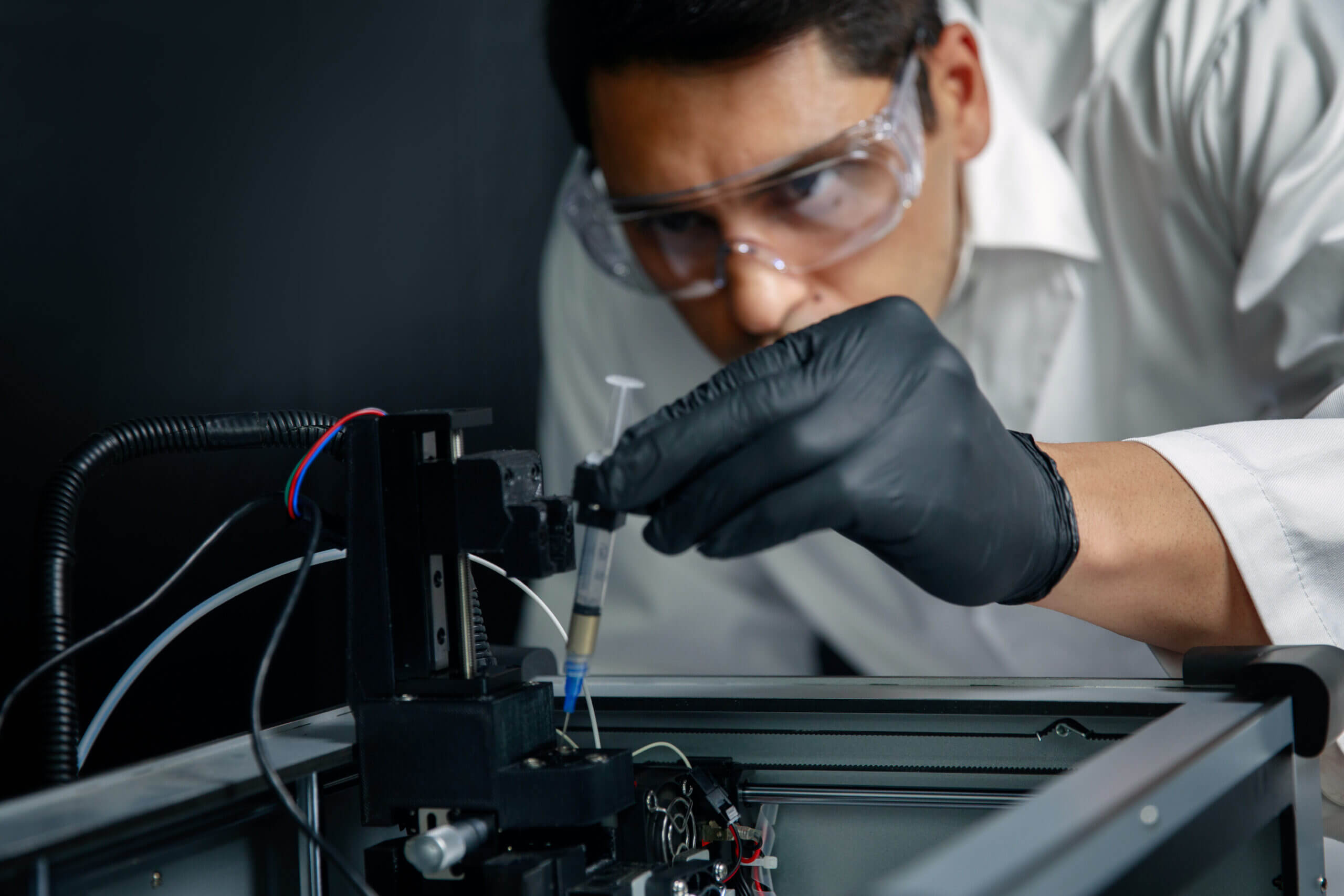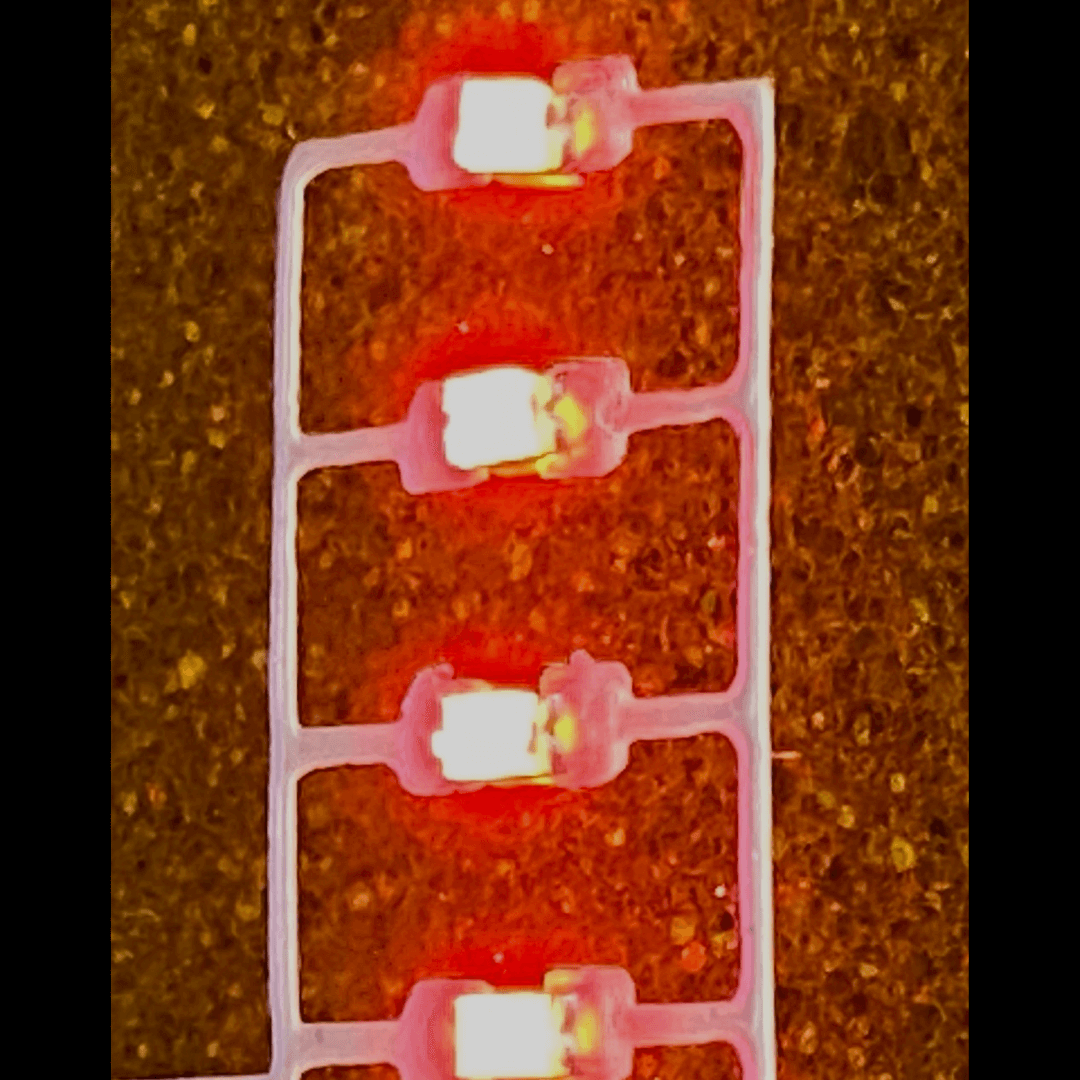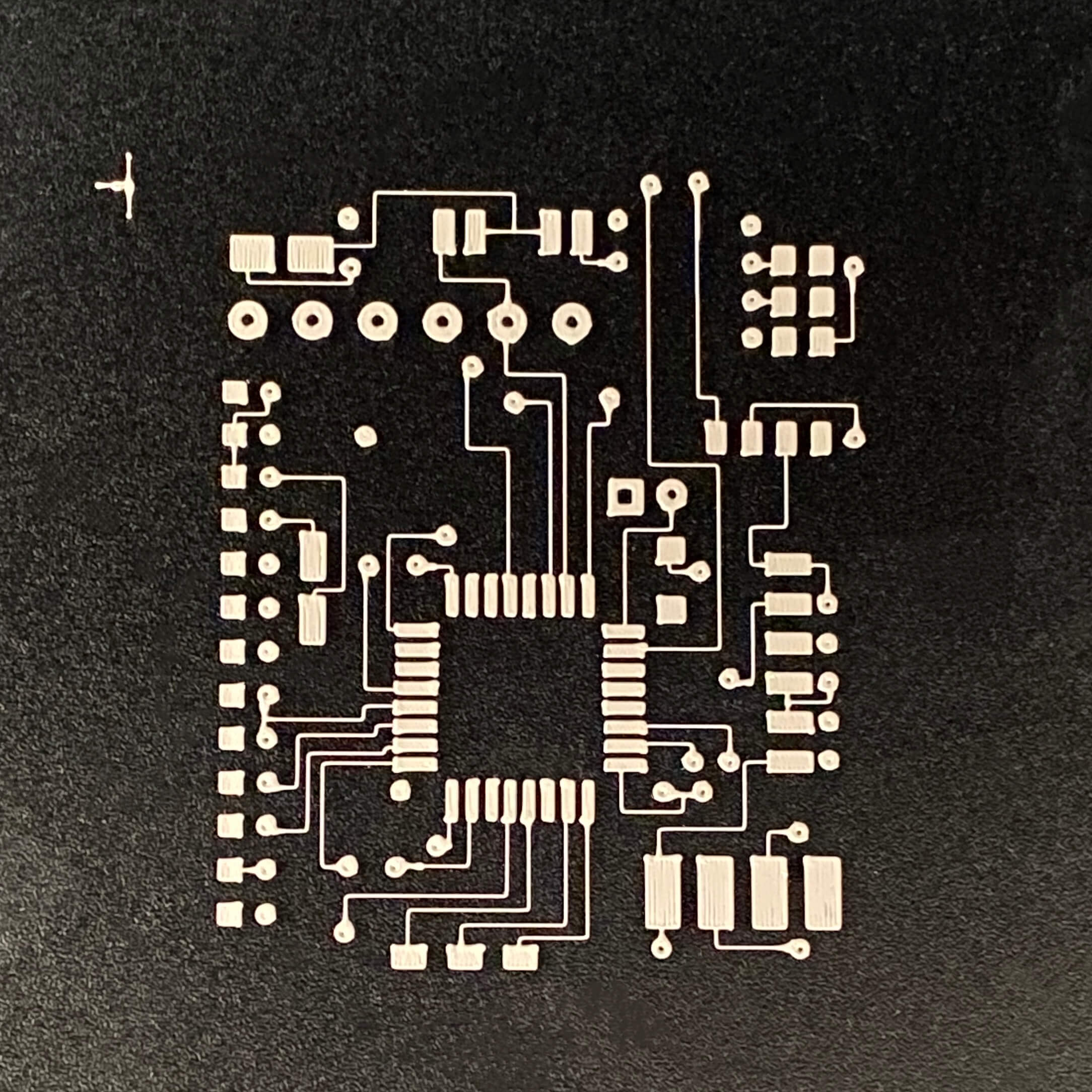Are you looking for a quick, cost-effective, and sustainable way to produce printed electronics and advanced applications? Direct-write technology, also known as direct-ink-writing or DIW, is the answer. DIW is a way to produce Additively Manufactured Electronics (AME), which combines 3D printing and printed electronics. This technology allows for printing layers of ink on various substrates, such as plastic and glass, and has many advantages over other AME methods.
In Manufacturing Business Technology’s recent “Advancing Electronics Manufacturing with Direct-Write Technology,” nano3Dprint’s CEO, Ramsey Stevens, explains:
A new additive manufacturing technology, direct-write 3D printing, dispenses functional inks and pastes, significantly expanding the types of materials that can be 3D printed. During the direct-write process, a micro-dispenser moves over a substrate to precisely deposit the required amount of ink or high-viscosity paste to print complex shapes in layers.

DIW uses various materials, including inks with sensing capabilities, dielectrics, and semiconducting properties. Polymers, silicone, and conductive pastes are just a few examples. These materials can create and seamlessly be embedded into 3D prints, resulting in smaller, more innovative, intelligent objects. With DIW, you can easily incorporate electronic components and sensors into 3D-printed applications to enhance their overall capabilities. Conductive inks and pastes can also be used to print ‘wires’ into designs.

Whether you’re making robots, sound systems, medical devices, or moon rovers, direct-write can help you prototype and make parts on demand. Quickly produce complex patterns that are high resolution, in some cases, less than 200 microns. With direct-write, you can engineer highly accurate and finely detailed multi-layered devices, from tiny wearables to sensors and PCBs.
Direct-Write vs. Other AME Methods
There are other methods of producing 3D printed electronics and other advanced applications. Here’s a brief overview of some alternative methods:
Inkjet Additive Manufacturing
With Inkjet Additive Manufacturing, a print head ejects droplets of ink containing conductive materials onto a substrate to create the desired pattern for electronic devices. The drawback is that inkjets cannot handle high-viscosity inks like direct-write. Using high-viscosity inks and paste is important because they contain more nanoparticles, which results in more conductive traces. Direct-write systems, such as nano3Dprint’s A2200 and B3300 can print thin or thick layers with materials that have a viscosity range from 1 mPa·s to 54000 mPa·s.
Aerosol Jet Printing
Aerosol Jet Printing uses a controlled aerosol stream to deposit small droplets of material onto a substrate. This method can create electronic components, such as antennas, sensors, and circuitry. Like Inkjet Additive Manufacturing, Aerosol Jet Print printing cannot handle high viscosity inks like direct-write can.
Screen Printing
Screen printing for printed electronics is a process that uses a special mesh made of steel or nylon to put conductive inks on a surface. Emulsion covers some of the spots to ensure that the ink is only distributed where needed. While screen printing can handle high-viscosity inks and paste, some may get wasted or contaminated during printing. However, with DIW, materials are contained until they’re placed on the surface, so almost no material gets wasted. With DIW, you only need to use the amount of material necessary to produce your design, and small production runs are economical compared to traditional manufacturing methods.
Screen printing isn’t ideal for custom prints because when changes need to be made, the screen most likely will need to be retooled or a new, costly screen must be made. Screen printing can also be limiting compared to direct-write, as changing the materials can impact the entire screen print. With DIW, you can easily swap out materials and try different variations without redesigning. Finally, printed electronics often require various materials or layers for different functions like insulation or resistance, and additional screens are necessary to print with multiple materials.
DIW with nano3Dprint
At nano3Dprint, we’ve experienced great success creating advanced applications like non-planar PCBs, sensors, antennas, and wearables with direct-write technology. For more information about Direct-Write, see Manufacturing Business Technology’s “Advancing Electronics Manufacturing with Direct-Write Technology.”




